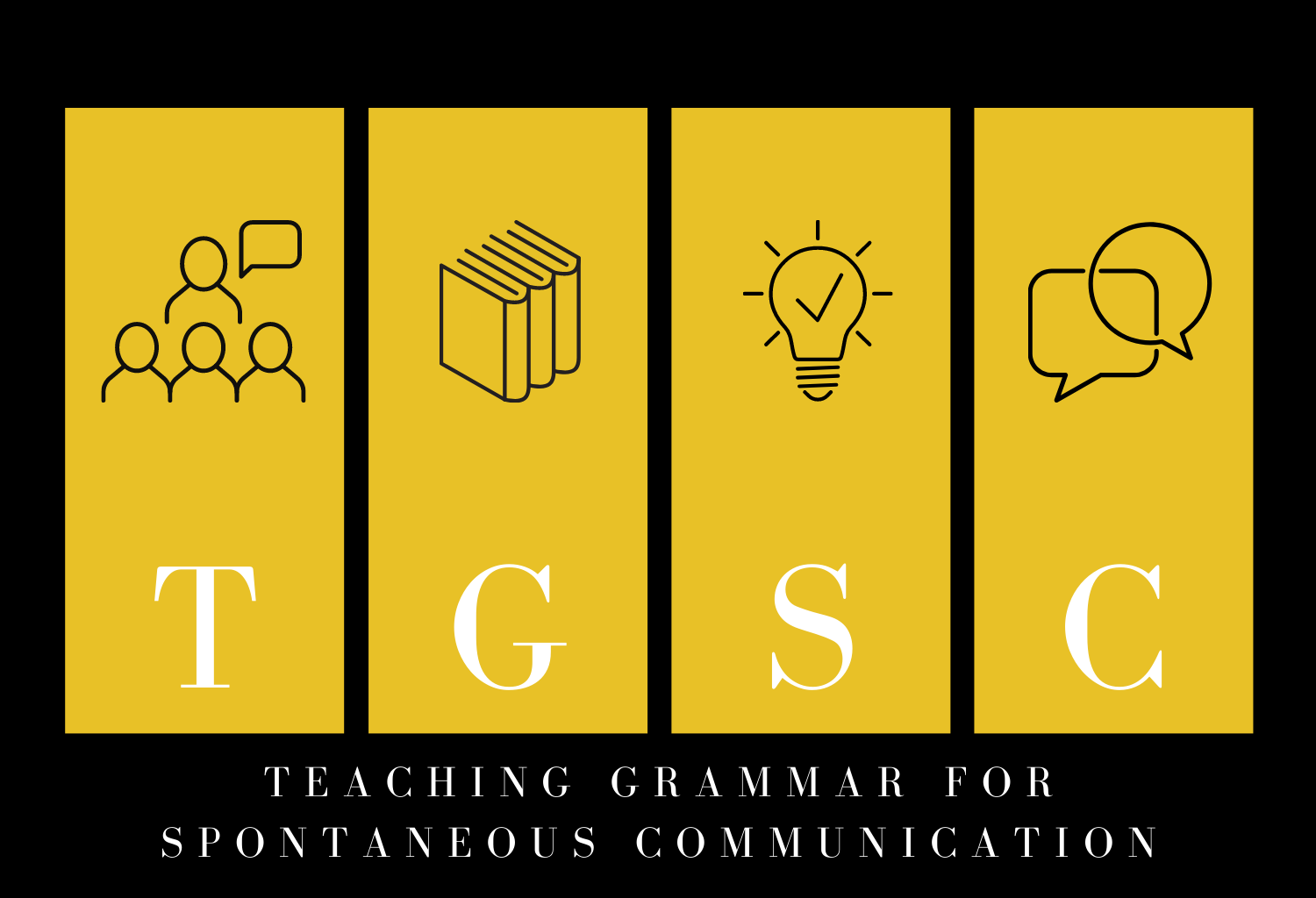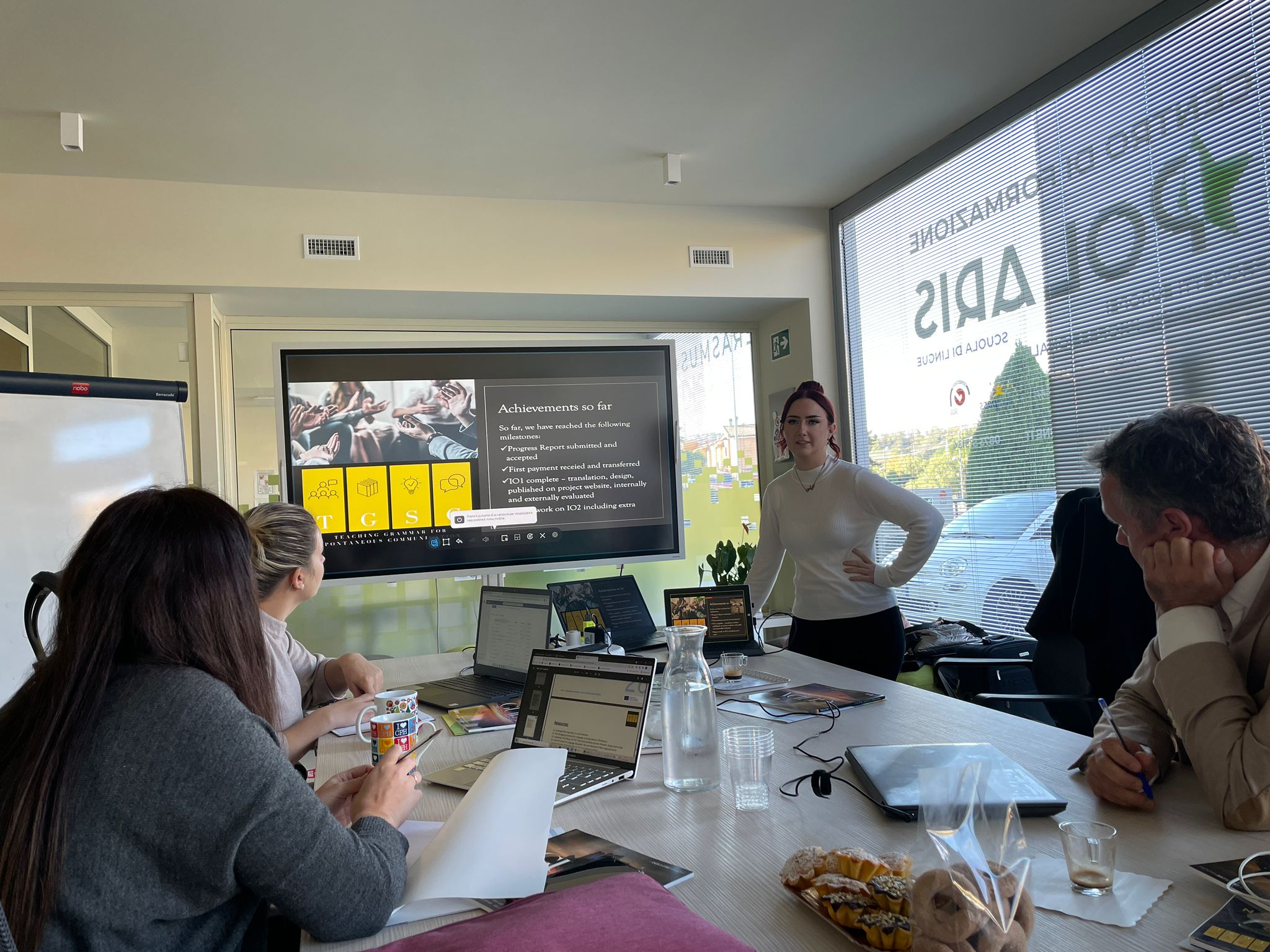As a glance at any popular language coursebook will show, language learning programmes generally place a strong emphasis on grammar. Today, it is widely agreed among second language acquisition researchers that teaching grammar is important. This is, in part, because as other aspects of a second language, many aspects of the grammar are likely unlearnable without explicit instruction. However, even when explicit instruction is provided, the knowledge resulting from grammar lessons is generally insufficient to communicate fluently and spontaneously outside the classroom, which is the ultimate goal for most learners. Thus, although learners may achieve a thorough understanding of grammar rules, their ability to use them in fluent, real-time communication may remain very limited.
Teaching Grammar for Spontaneous Communication (TGSC) is an Erasmus+ project co-funded by the European Commission which seeks to address this issue. More specifically, this project aims to familiarise second-language teachers with ways to promote the development of grammatical knowledge that learners can use fluently and spontaneously in real-time communication. It is hoped that this will bring teachers one step closer to the needs of their learners.
Centred around the development of innovative tools for language teaching professionals, the TGSC project launched in the last quarter of 2020 and will complete in August this year. The project is being undertaken by a consortium of five organizations from five different European countries. At the core of the consortium is Eurospeak Language School, a UK-based language school which has served as the main project coordinator and overseen the development and implementation of all project activities. The remaining partners are based in Italy, Spain, Romania, and Latvia.
The TGSC project has seen the development of three cutting-edge products for language teaching professionals. These include a handbook on teaching grammar for spontaneous communication, a CPD programme on the same subject, and a handbook on how to design effective CPD sessions. All of these resources have already been released and are freely available on the project’s website at https://tgsc-erasmus.site/.
The first of these products is a handbook which provides an introduction of the topic of teaching grammar for spontaneous communication along with a selection of ready-to-use grammar practice activities. The handbook unfolds over four sections, touching on topics such as the aims of grammar teaching, the role of explicit knowledge in grammar learning, and the different types of grammar practice activities that can prepare learners for fluent, spontaneous communication. This handbook is available in seven languages: English, Spanish, French, German, Italian, Latvian, and Romanian.
The second product is a CPD (continuous professional development) programme designed for academic managers and teacher trainers to be able to provide in-house training. Also available in seven languages, the programme is comprised of presentation slides and accompanying facilitator notes for four CPD sessions. These provide an overview of the topic at hand along with opportunities for discussion and hands-on practice. Together with these resources comes a booklet designed to provide a written record of the content of the programme and some additional examples of suitable grammar practice activities.
The third product is a handbook on how to design effective CPD sessions. This product is a spin-off of the second product (the CPD programme). As the members of the partnership had to upskill themselves in the area of how to design CPD materials for the purposes of this project, they decided to produce this handbook to share their research findings and lessons learnt. It covers topics such as how to engage your audience, good practices in CPD sessions, and fun activities for CPD sessions.
If you would like to find out more about this project, please visit our website at https://tgsc-erasmus.site/. You can also follow us on Facebook at https://www.facebook.com/tgscerasmus to stay up-to-date with the latest developments in the project!


No responses yet